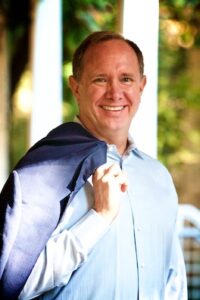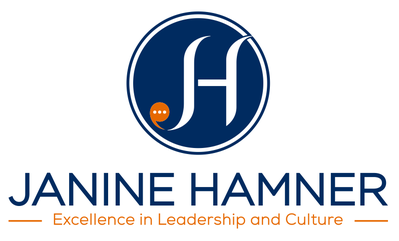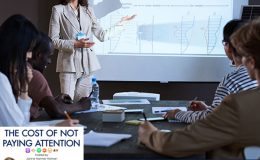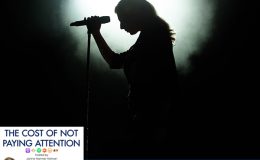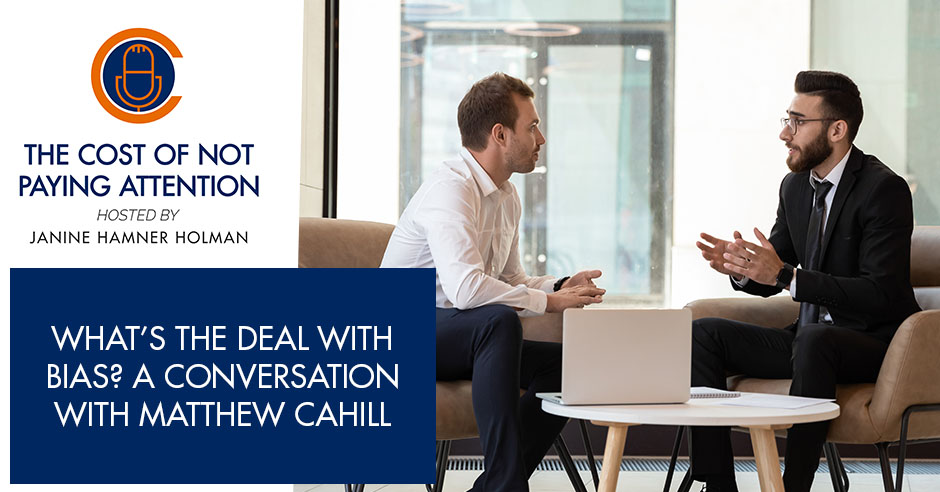
Biases can run deep in people’s lives. What should we do to recognize and free ourselves of these biases? In this episode, Janine Hamner Holman discusses the mechanics of bias with the CEO of the Percipio Company, Matthew Cahill. Matthew talks about how biases are formed, how to affect life and society and how to combat them. Learn more about how the mind works by tuning in.
GUEST: Matthew Cahill | LinkedIn |
HOST: Janine Hamner Holman | [email protected] | LinkedIn, Facebook, and Twitter | Subscribe to my Newsletter! Book me to Speak!
—
Listen to the podcast here:
What’s The Deal With Bias? A Conversation With Matthew Cahill
What am I paying attention to? The idea of belonging. There are many different kinds of belonging. Many of us belong to families, either those of our birth or those that we choose to create along the way. We often belong to some tribe. It could be as small as my squad, my girl crew, those people who I know will help me bury the dead body with no questions! A tribe could be everybody from a certain country or everybody who’s part of a race to which I identify and belong.
There are many different kinds of tribes. Then we have that kind of belonging that many of us long for: belonging at work. That feeling that maybe you once had and hopefully you have now, and you will continue to have in the future. That great place where we got to do work that was meaningful to us with people that we knew had our backs, which leads me into our guest in this episode.
Matthew Cahill is the leader of The Percipio Company. One of the things that I love about Matthew is he’s got deep expertise in cognitive, social, and workplace biases. His understanding is based on the belief that if you have a brain, you have a bias. It’s one of the things that is great about his work is this concept of de-stigmatizing bias because it’s truly that simple. If we have a brain, we have a bias. He works with executives to help reduce mental mistakes, strengthen workplace relationships and disrupt existing biases within all kinds of different things.
He might be looking at HR processes, meeting protocols, or corporate policies. There are all kinds of different ways in which our biases come into play. Matthew has demonstrated success with some big clients that you’ve heard of like Salesforce and LinkedIn, as well as some small and mid-sized companies that are working to create more inclusive workplaces that work smarter, generate more revenue and move from bias to belonging. Welcome, Matthew.
That was a thunderous introduction…although I feel like it may be an overinflated or overflattering introduction.
It’s not overinflated out at all. It’s all true and all based on my experience of you and having the opportunity to get to know you know about the work and your company is doing. There is nothing and inflated about none of it. This is who you are.

Bias: When you anchor a conversation in cognitive biases, it’s less threatening. It’s less triggering. We have the opportunity to be more fascinated and deeply curious.
It’s humbling to hear that. If humble pie ever tasted good, then it would be easier to digest that.
This is going to be a super fun, interesting conversation because Matthew and I both like to have fun and challenge our brains. I’m going to start. What is something that you’ve become aware of that either you or other people were not paying attention to? Sometimes that inattention is conscious and sometimes it’s not. What’s been the cost of that inattention?
The easiest one to pick at, the low-hanging fruit, is what the science journals would refer to as normalcy bias.
What’s normalcy bias?
If you rewind in your mind back to March of 2020, much of the prevailing collective wisdom of the time in America was that this will be like SARS or something, if it was even acknowledged. It was like, “Tell me when this is over so I can go back to my Starbucks routine or back to normal.” How often did you hear that it would go back to normal? You still hear it. There’s a science behind this, and the science is that our brains are wired to crave that.
What back to normal means is, “Bring me back to comfort and what is familiar.” What’s forgotten and the cost of that is over time is it becomes that same sense of comfort that brings you into a rut, to a pattern of behavior that then becomes difficult to break out of. It’s very insidious because over time, that sense of comfort can lead you to a source of pain.
We need to learn how to exercise our resiliency muscle. We need to lean into agility. Share on XI heard somebody say, “When was the last time that you experienced significant growth while also being in your comfort zone?” I’m like, “Never!” We don’t grow personally and professionally. as organizations and as societies, when we are in our comfort zone. Unfortunately, now we’re so far out of our collective comfort zone.
I think back to TV shows and other cultural icons that have come along that have cemented that idea of, “Back in the good old days, things were easier.” I think about Happy Days when I was growing up. Those shows painted a sweet, fuzzy, nice feeling veneer over our past experiences, and that’s the way that we remember the parts of our past that were good.
I think back to Christmases when I was growing up, and it’s all of these Hallmark moments. There was also my actual life that got messy, but that’s not how we remember it when we are thinking back into the idyllic recesses of our brains. On the one hand, this idea of longing for how it used to be and what was normal and comfortable feels like a normal response to have.
In addition, we need to learn how to exercise our resiliency muscles. We need to lean into agility. When we think about our brains and how our brains are wired, with all that you know about bias and cognitive science, what are our opportunities to use our brain to help us as opposed to what our brain is wired to do, which is to comfort us when we’re uncomfortable because our brain likes comfort?
The starting point I believe that is most effective is built around understanding biases.
What are biases?

Bias: What kind of mischief gets created in the world when we haven’t distinguished or figured out what our biases are?
Biases are both conscious and unconscious. If we’re talking about cognitive biases, that is a whole other realm of understanding. That’s the first area that I differentiate. When you anchor a conversation in cognitive biases, it’s less threatening and less triggering. It’s more fascinating and it’s deeply curious. Who doesn’t want to learn more about how their brains work? What I found is that when you’re exploring cognitive biases, an easy one to start with is “like-me bias.” It is our propensity to gravitate towards people, places and things that are like us. That may be rooted in our experience or in a place, maybe it’s an alma mater.
There’s definitive research that shows our brains are wired in such a way that when you identify with a sports team, for example. If you’re not one of those who’s a fanatic for a sport, you probably know somebody that is. That person that is the fanatic for that sport, when they’re watching their team play and their team is doing something wonderful, score a touchdown, a goal, or whatever that might be, their brains are firing in the exact same areas as if they themselves were doing that act.
My home of birth team is the New Orleans Saints, but my home of growing up team is the New England Patriots, which makes my husband crazy because he was born in New York. I don’t know if you’ve noticed, but there’s a little bit of a New York-Boston rivalry in the domain of sports. He then moved to Los Angeles, and there’s also a bit of a Los Angeles-Boston thing. When he is watching any of my teams do poorly or his team does well, he gets very excited. That’s because in his brain, it’s like he’s there on the field?
That’s the first part of it. Because you mentioned Boston and New York, it reminded me of this research. They took people who were avid Red Sox fans. They asked them a simple question, “How close is the Yankee stadium?” Those people that were avid Red Sox fans on average stated that it was much closer than what it is from Boston. The theory was that they perceived the Yankees as a threat at some level. When you perceive somebody as a threat, then you’re more cautious, therefore conservative about their estimates of how close they may be. This type of cognitive bias is a conscious bias. If you’re a fanatic for a given team, then it’s pretty clear.
I’m a University of Michigan grad. When Ohio State Buckeyes come into the room, there’s some dissonance at best that’s happening in my brain to overcome that bias and make that connection, but it’s not impossible.
The subsequent studies are fascinating. If you are given a math problem that is asking you to solve in a context that you don’t value, whether it would be a political context or if somebody’s asking me how many Ohio State grads are going to go on a bus and then go from here to there, our brain is limited in its capacity. You’ll have more mathematical errors given a context that doesn’t align with your “like-minded bias.”
I was an English-Political Science double major. It’s important to me to use my words well, which is something that I have a bias towards. I like people who use their words well. I like it when I use my words well. What you’re telling me is that I will be less able to use my words well if we are in a context with which I do not identify?
When you perceive somebody as a threat, then you're more cautious about, and then therefore conservative about their estimates of how close they may be. Share on XThat’s what the research is telling us.
That’s hot and frightening!
Math may be the exception because you were alluding to that you don’t do Math well in any context. Very tightly coupled with mathematical skills are logical reasoning and rational thought. When you take that and apply it to our societal discourse and the polarization that takes place, and our befuddlement on why the other can’t be, fill in the blank, rational or logical. Part of it is rooted in the way our brains are wired to process information.
My brain is now going down a couple of very different paths right now!
One is back to Boston and New York. My husband grew up in this New York Yankees, LA Lakers world, and he’s also Black. There have been some serious problems in Boston related to race issues, and race issues connected to sports. He has a real bias against Boston and the whole Boston environment…and it’s all through the lens of sports. He wasn’t aware of the busing riots but he’s sure aware of the racist history of the Boston Celtics and Red Sox.
I, however, didn’t grow up in Boston. I grew up in Cambridge. Anybody who knows anything about the greater Boston area knows that Boston and Cambridge are not the same things by miles… and he doesn’t care.
He can’t get out of, “Boston is bad,” to have an authentic experience coming home with me to hang out with my family and all the things that we do that have nothing to do with sports. I didn’t grow up in a sports family. My family isn’t geared around sports, but his brain has become so wired, and this idea around the threat of the opposing team, and then you layer the race issues on top of it, that he would be going into a threatening place or a hostile territory. That helps me let go of the things that happen in my brain about his bias against Boston. That helps me release some of my annoyance.
How did he look past your Boston part of your identity?
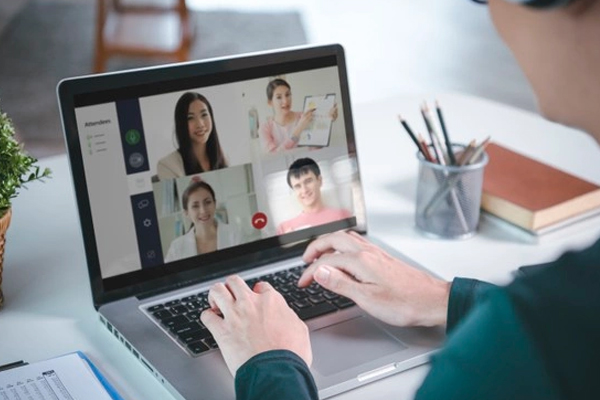
Bias: In a virtual context, you can actually put in more structures to help facilitate a below the surface conversation.
I don’t have the “park the car in Harvard Yard” accent, even though I can do it. I do, however, know what Wicked Awesome looks like and sounds like, and is like. Also, I think he thought I was cute. It’s helpful.
Let’s segue out of that bias, and into the “beauty bias.” How do people get treated preferentially versus what’s not standard beauty?
I am a human who has spent my life in a bigger than average body and who has battled with my weight my whole life, I have spent a lot of my life feeling like I don’t fit in because I don’t conform to that “beauty bias.” Where did we ever get the idea that we were all supposed to look the same? I don’t know why we ever got this idea that all bodies are supposed to look the same, that there’s one way of being beautiful. All women are supposed to… fill in the blank. This idea of conformity with “beauty bias” gets in the way of so many different things in our lives.
I realized at some point after I started doing work in the space of diversity, equity and inclusion and looking at biases, I realized I have a bias. What I used to say was I have a bias against women who are thin because I’m not. The story in my head was, “If you’re thin, your life is perfect,” because that’s what the fairytale is. “I don’t want to know you. I don’t like people who are perfect. That’s not very interesting.” I realized that’s not what my bias is. I thought it was, “I have a bias against women who are naturally thin,” and then I realized that’s not what my bias is.
It’s a combination of “like-me bias” and “beauty bias.” It’s women who are naturally thin and white because I realized I have friends who are naturally thin and Asian and Black. I got nothing about that. It’s women who are naturally thin and of Western European descent because it’s like me. Once I distinguished that, I was like, “If I walk into a room and there’s a naturally thin White woman, I’m going to have a thing that I now know is there.” Because I know it’s there, then I can release it. I can be with her as her. What mischief gets created in the world when we haven’t distinguished that or we haven’t figured out what our biases are?
You just stepped through step one. To become aware, you need to take action. The action is finding that person against whom you might have a bias and then creating that common ground. Because you know and are aware, you’re not going to automatically walk away from that person or avoid that person because you think less of them. Now that you’re aware, you can be proactive and reach out and find some common ground, and more likely than not, have a new friend that you never had before if you weren’t aware of your own internalized biases.
You need to take action, and the action is finding that person against whom you might have a bias and then creating that common ground. Share on XHow can we do that? What are the tips, tricks, opening lines, or whatever you could think of that we can use to get into step two? We’ve distinguished our bias. We’ve realized, “I have a thing about people who are… whatever.” I come to an event or I’m on Zoom or we’re in a breakout room, and I am with somebody who is in that category. How do I start to find those commonalities?
I want to parse out what you were describing as COVID versus not COVID, and in-person versus a Zoom-based event or some other video platform. Although I have a definitive bias for Zoom, I can’t stand Microsoft Teams. I hate it.
I was on a Cisco platform which I thought, “They’ve been doing this forever. Cisco, this is going to be great.” No, it was glitchy and weird. I’m with you. I’m biased for Zoom.
There’s a reason the founder of Zoom left Cisco. They were stuck in an “institutionalized bias” in the way they were, and they didn’t want to do a new way to develop. That’s a common pattern, not only in the tech sector but across the board. We can unpack that one a little bit more.
How do you create a connected world? One of the things that you’ve been privy to that I’ve been doing with a handful of other trusted advisors and coaches and consultants is meeting every Wednesday to explore an amazing formula for creating connections. The formula is 60 minutes, but we don’t take 60 minutes and allow one person to talk for any length of time, which is a fool’s game in the virtual world. We have unlimited levels of distraction. I don’t know anybody’s brain that hasn’t been subject to at least the little twitch of the phone to see what the notification was or actively having another window open and doing other things. Nobody that I’ve met on this planet is disciplined enough to be for that length of time.
We can all do it for a short window of time. Maybe your audience has already dialed off and is doing something else, but if they’re still here, then we’re capable of doing it. What the virtual world is and what we’ve learned from the Inclusive Leadership in a Virtual World series is that when you shift your thinking about how you’re going to hold that space and think about it for 60 minutes, “How can you best engage the people who are there?” When you’re very intentional about how you’re going to engage them, it’s amazing. It can be even more productive than if you had those same people all in the same physical room for the same amount of time.
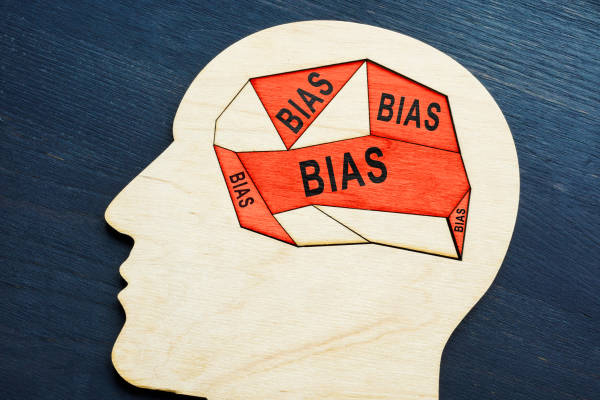
Bias: Biases run so deep into our societal structures and over time that’s how bias becomes institutionalized.
What we’re learning is that when you’re all in the same physical space, a lot of shit happens organically and non-verbally. A lot of it is rooted in the unconscious biases that we’re not aware of because they’re unconscious. When you’re in a virtual world, you can be far more explicit in how you structure the meeting itself, the way people will engage with each other and you give them guidelines, context and frameworks for them to have more meaningful discussions that can go beyond the surface. An in-person gathering is much more subjective as to how people get below the surface. It either happens or it doesn’t. In a virtual context, you can put in more structures to help facilitate below-the-surface conversation, if that makes any sense.
I have had the privilege of participating in a lot of these Inclusive Leadership series meetings. If somebody out there wants to come and check it out, how would they find it?
The easiest way is go to PercipioCompany.com and scroll down a little bit. The second section is Inclusive Leadership in a Virtual World, register here.
Participate in the Inclusive Leadership series! If you’re new to the show or if you are a long-time subscriber to the show, you know that we love to talk about here is all of the things that are happening in the world that we have not been paying enough attention to. What Matthew has created in his Inclusive Leadership series are deep dives into specific areas where there’s a lot more opportunity to delve.
A lot of it has to do with personal and professional growth. Some of it has to do with how we step more into our own leadership. There’s one that’s all about toxic leadership and the ways in which we might be the toxic leader, and the ways in which we can work inside of our organizations to battle toxicity when it occurs and what we can do, strategies and all of that goodness.
There have been many incredible great conversations. It’s free and participatory. It is often the highlight of my week! Occasionally, something will come up and I’m not able to be there, but almost always I am there because it’s awesome and you’ve created a great space.
You don't want to be vulnerable because you fear you're going to get hurt. Share on XThe person who spoke about toxic organizations was Raj Subrameyer. What I love most about what he did for the group is what we attempt to do every week, which is to create a self-reflective space, and he led with that. He was talking about toxicity in the workplace, but not saying them or others. He was saying, “This was my experience. I found myself being that toxic guy.”
When you lead that way, this is all about inclusive leadership. It is leading with vulnerability. What does that mean? There’s still a stigma against being vulnerable and there’s an instinctual element. There’s also a societal pressure to not do that, but there’s also instinctual wiring to not do that. It’s based on self-preservation. You don’t want to be vulnerable because you fear you’re going to get hurt.
Our brain is wired, “No, don’t say that. Don’t expose yourself. Do not expose your underbelly. Don’t let them see that.” In general, most women have been socialized to have an easier time with emotions and vulnerability. In general, most men have not been socialized in that way. The Queen of Vulnerability, Brené Brown, is a woman. It’s not shocking.
As a man who works in the business world, helping companies, executives and doing some work in big companies and small companies and everything in between, how do you help people lean into vulnerability and let go of the bias that vulnerability equals weakness? Talk a little bit about how you see that world and how you help people lean into that.
You were saying professional and personal growth, and I want to pick that apart. It’s becoming less and less relevant to differentiate because we live in an information age. We’re not in an industrial age anymore. You could draw an arbitrary line. Do you want to see 2000, Y2K, remember that? That could have been the definitive turning point from the Industrial Age to Information Age. That’s also a Millennial marker, easy ways to point to that point in time and say that was it.
That was many years ago.
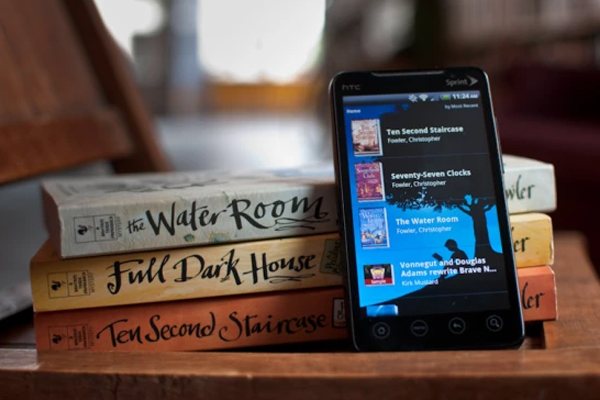
Bias: We are dismantling those stereotypes. We’re creating new ones simultaneously, but we’re dismantling some of the ones that have been around a long time and have done way too much damage to way too many people over a period of time.
This is my point. These biases go so deep into our societal structures, and over time that’s how bias becomes institutionalized. When I say societal structures, I’m thinking specifically about institutionalized biases, “Men are supposed to be this way. Women are supposed to be that way.” We have many things in our world that reinforce that as a norm. What we’re now embarking on is at least a partial deconstruction of what those are and it’s only partial because it has just begun.
We’re trending in a direction to fully deconstruct these established or institutionalized biases around race, gender, culture and age. We’re busting up these stereotypes. The stereotypes you mentioned, I will always defer to another amazing thought leader in this space, Chimamanda Ngozi Adichie. She is a brilliant author and speaker. She’s a New York Times bestseller. Her line about stereotypes is something I go to often. The line is, “The danger of single stories is not that they may be true, but that they’re always incomplete.” When you think about that for a moment, whatever stereotype it is, and maybe it is true. Maybe all men are assholes or all women are crybabies or whatever.
Maybe that is true for a moment, but it’s not the whole story. I am an asshole sometimes. I’m also a crybaby sometimes. I’m also a lot of things that are very transactional, transient and fleeting and they’re not the whole story. What I love most about the work that I do and the point at which I see as a collective is that we are dismantling those stereotypes. We’re creating new ones simultaneously, but we’re dismantling some of the ones that have been around a long time and have done way too much damage to way too many people over a period of time.
She’s somebody with whom I’d not been aware of before this moment, which is one of the things that I love about this digital age. One of the silver linings in this whole pandemic is how people meet to become connected and be friends. In a before world, in the pre-World, we weren’t having those opportunities and those connections now. You’re in the Bay Area, I’m in Los Angeles. It would not have been as easy for us to meet and become as connected as I feel to you in a pre-Zoom world.
I would only push a little bit on the timing of it. Eventually, it would have happened, but COVID accelerated it. Imagine if COVID would have happened instead of March of 2020, it’s in March of 2010, when video conferencing, the internet, the bandwidth and the technology weren’t there yet to allow for this. We’re getting real-time communication, recording it, and there’s no lag or dribbles. It’s crystal clear. It allows us to connect with each other.
Going back to the brain, our brains store information in bits. This is an oversimplification and it’s a bit of a metaphor. It’s not literal. I’m talking figuratively, but the model is helpful for understanding how our brains work. Our brains store information in bits and snapshots. It’s the reason why when you see somebody’s kid after four years, your first reaction is what?
We're trending in a direction to fully deconstruct these established, institutionalized biases around race, gender, culture and age. We're busting up these stereotypes. Share on X“You’re so big!”
Exactly. In your brain, you still remember how they were. The beauty of that is that your brain is processing about a million bits of information every second of every day. It needs to store them in little binary constructs. Over time, that’s magnificent and at the moment, it’s brilliant. Over time, it can pose a lot some problems. When you can’t move beyond those binaries or beyond that snapshot and see a holistic picture at that moment, that’s where we run into a lot of problems. You can fill in the blank with racial categories or gender categories, or the ones you were referring to about skinny women and skinny white women. You have to train your brain to move beyond the binary that you can appreciate a more holistic and deeper sense of who a person is or where a place is or what a thing is.
There’s so much in there. We all know people and we know them well. Suddenly, we find out something about something that’s been going on. My little brother has landed in Kenya, and he’s on a huge new adventure. Before he went to Kenya, there were many hiccups in his plan. If you didn’t know me well and you didn’t know me in some particular contexts, you wouldn’t have known that that was happening in my life at all. The hiccups were a big deal. I was managing my emotions and managing my 80-year-old parents’ emotions around that.
Now, all is well and he’s off on his adventure, but it was a hell of a moment. There are always things that even in the people that we think we know the best, there is always other stuff going on. The more that we can lean into that idea that yes, while that thing may be true, it’s only a teeny piece of the picture. While I might know Matthew has a whole lot else that’s going on in his life, and that makes up who Matthew is.
Two words that keep coming into my world are grace and curiosity. I am not perfect. Nobody I know is perfect. Yet, we hold ourselves to standards of perfection, and then we hold other people to standards of perfection that nobody can achieve. If we can have grace towards ourselves and others and if we can get curious about ourselves and others, we have much more opportunity for that authentic connection and for revealing to ourselves the biases that we might have had, “I didn’t know someone who was gay would think that, or someone who was Black would think that, or a Latino would think that.” It gives us much of an opportunity to reveal to ourselves what our misconceptions are, what our limits of experience are, what our biases are when we’re open to hearing that about ourselves.
Grace and curiosity are our two distinctive inclusive leadership skills. Those are two named skills and their actions. They are things that you have to practice. Extending grace and being curious. Those are the actions that inclusive leaders need to demonstrate in order to create this ever-elusive culture of belonging. Starting the show and mentioning B [belonging] to the DE&I [diversity, equity & inclusion] dance. I’ve been doing this long enough to remember when Corporate America’s party line was, “We need to tolerate diversity.” That was it. It was just the D. There was no EI or B. It was D, and we need to tolerate it.
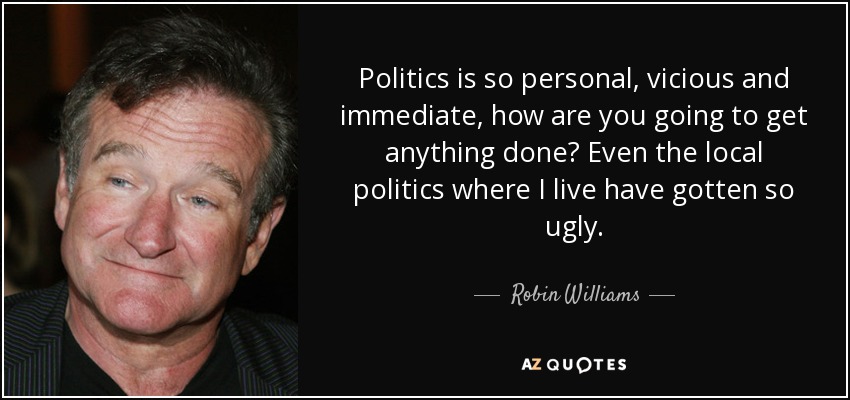
Bias: Rather than saying politics, let’s talk personal because personal is political, but personal doesn’t necessarily instill a fear.
You tolerate something that you wanted to go away. The language was offensive. That’s where it was many years ago. It didn’t last long until the new language was, “We can’t have diversity without inclusion.” You get a lot of the cute little sayings around, “Diversity is a ticket to the dance or the entry ticket, and inclusion is being asked to dance.”
Diversity and inclusion, they’re very important, but then when you get into the institutional or the structural barriers that exist in the workplace, “We need to have equity here. We need to build that in and we have to be very intentional about it.” That’s riding a nice course. I call it the ever-elusive B because it’s not in a lot of circles yet. It’s getting there and also getting pretty long.
There are more letters that get added on, and I appreciate it, but there’s a certain audacity that’s added when you want to try to allow and create a culture of belonging because you’re now talking about fundamental human need where there are some that would argue that the need to be needed is greater than the need to survive.
The evidence of that is suicide. People would never kill themselves. We wouldn’t override our own survival instinct if our need to belong was met. For any workplace to have that B [belonging], an aspirational goal is magnificent because I believe that’s what’s needed in this information age that we find ourselves in. There are still jobs that are physical labor. There are still jobs that are physical in nature, but any job that requires you to think, “I think therefore I am.” You’re there. This notion that you can be something in one context and then be something else in another context is silly.
That’s what we once believed. I am this way at work and I am that way at home. I check my home self at the door when I go to work. How long has that been the paradigm? Only now is it beginning to shift and be like, “No, I am one whole human and I’m the same me at work and at home, like it or lump it.”
The line was very porous, but it’s been completely eradicated in COVID.
I hope this has been as fun for you reading as it has been for me and hopefully, for Matthew as well. Before I wrap it up, I’m going to give you one last moment. If there’s something where you would love to leave people with, do you have something you want to throw in here?
There’s an old axiom about not talking about politics and religion in polite discourse. When you meet people, you avoid those topics as if they were taboo. The world is changing a bit, and there’s a need to move beyond those linguistic constructs and those widespread blanket categories because we’re all far more nuanced than one thing.
The problem with that statement is that it’s relegating somebody to one thing, and it’s all bad and it’s back into that binary good or evil. In the workplace, politics and religion are trigger words for a lot of people. Rather than saying politics, let’s talk about personal because the personal is political. Personal doesn’t necessarily instill a fear. If somebody wants to know something personal about you, it’s most often perceived as an invitation to get to know you, so that diffuses one.
For religious things, the other thing that’s not taboo in the workplace is energy or spirit. We want positive energy and people with good spirits and yet it’s not a far stretch. Religion is the formalization of different interpretations of energy and spirit. That’s an oversimplification. My point is there’s a language that exists that we can use to connect with one another and to rewire our brains and to allow us to recreate this planet because if we don’t, we’re fucked. That’s what I want to leave the readers with.
Start connecting about the things that matter to us and where we can have authentic or real conversations and get to know real people. Because what is true is that this body that I have fought with for so much of my life is merely a container for the me that is within, for the you that is within. That’s what we want. That’s what we want to know and that’s what we want to be known. Belonging and that feeling of being known and seen. That’s our work for the future of us.
This has been a joy and a delight. Thank you much for sharing your time and wisdom. I adore you.
Thank you, Janine. We’ll start our mutual admiration society.
Remember, great leaders, make great teams. Until next time.
Important Links:
- The Percipio Company
- Inclusive Leadership in a Virtual World
- Raj Subrameyer
- Chimamanda Ngozi Adichie
- Brene Brown
About Matthew Cahill
